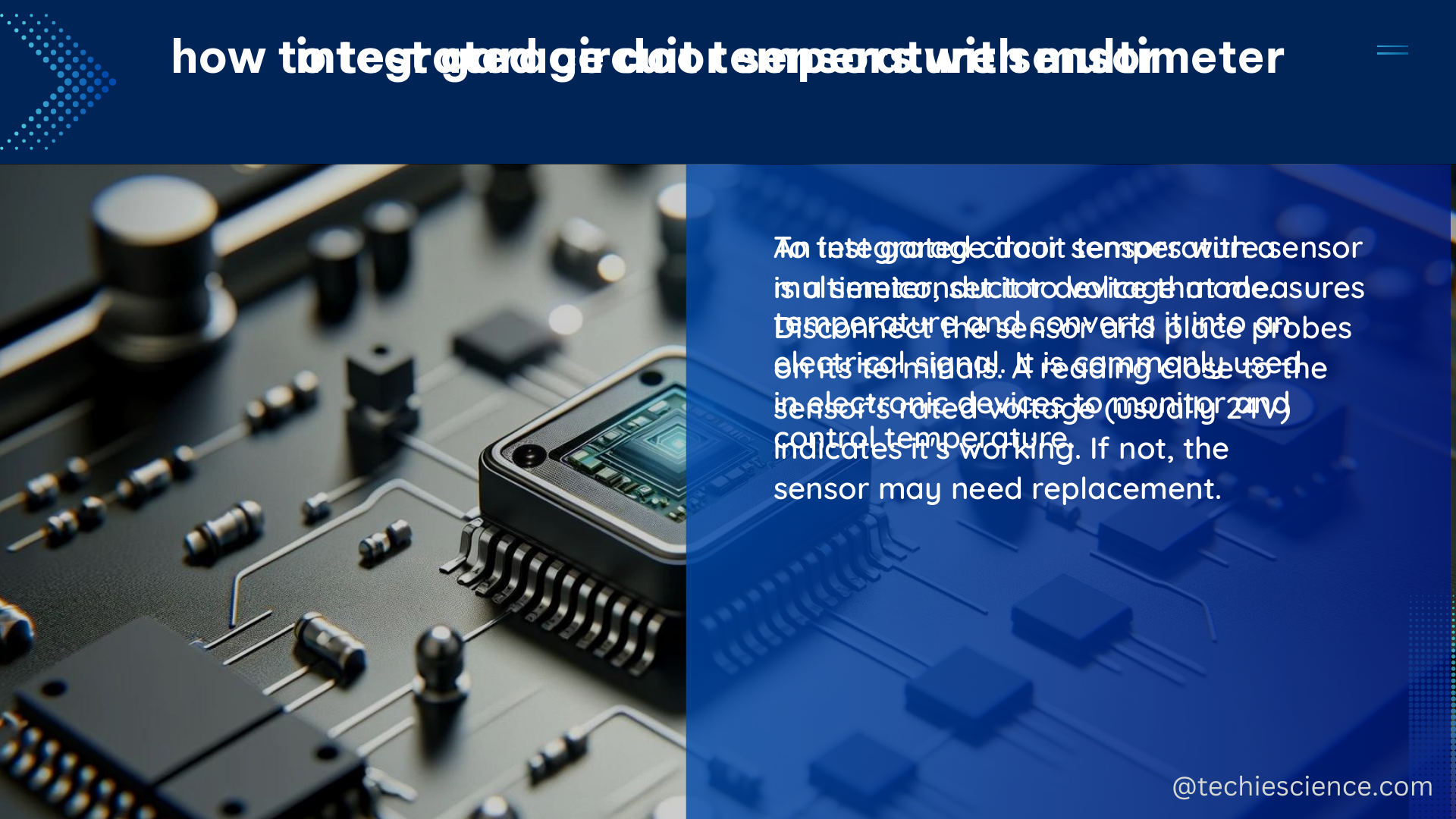Integrated Circuit (IC) Temperature Sensors are two-terminal devices that produce an output current proportional to absolute temperature. These sensors are designed with a small form factor, low thermal mass, and fast response time, making them suitable for a wide range of temperature monitoring and control applications. The most common temperature range for these sensors is -58 to 302°F (-55 to 150°C).
Understanding IC Temperature Sensor Types
IC Temperature Sensors can be categorized based on their output type:
- Analog Output IC Sensors:
- Voltage Output IC Sensors typically produce 10mV per degree Celsius with a nominal output correlated to 0K or 25°C.
- Some sensors have an offset at 0°C, allowing them to be used and read below 0°C without a negative power supply.
- Non-linearity is typically less than 1°C across their temperature range.
-
Current Output IC Sensors have a nominal output of 298 µA at 25°C and produce a 1 µA output per degree Celsius.
-
Digital Output IC Sensors:
- These sensors have built-in Analog-to-Digital (A/D) Converters, and the number of digits in the A/D converter provides the temperature resolution.
- A 10-bit plus sign A/D converter provides temperature resolution in increments of 0.25°C.
- A 12-bit plus sign A/D converter provides temperature resolution in increments of 0.0625°C.
Key Features and Applications of IC Temperature Sensors

IC Temperature Sensors are widely used in various applications due to their unique characteristics:
Strengths:
- Analog or digital output options
- Low cost
- Direct voltage, current, or digital output without additional circuitry
- Linear output
- Direct reading of temperature
- Various communication interfaces (e.g., I2C, SPI, UART)
- Low thermal mass for fast response time
Weaknesses:
- Narrow temperature range (-55 to 150°C maximum)
- Wider interchangeability than most Resistance Temperature Detectors (RTDs) and thermistors
- Wide variation in accuracy between different models
- Small package sizes that can be a barrier to low-cost applications in some immersion designs
Common Applications:
- Circuit boards for temperature monitoring and control
- Computer systems for CPU temperature control
- Telecommunications devices (e.g., cell phones, PDAs)
- Industrial immersion applications
Technical Specifications and Considerations
When selecting an IC Temperature Sensor, it’s essential to consider the following technical specifications:
Temperature Range and Accuracy
- IC Temperature Sensors typically cover a range of -55 to 150°C (-67 to 302°F).
- Accuracy can vary from ±0.5°C to ±2°C, depending on the sensor model and manufacturer.
Response Time
- IC Temperature Sensors have a fast response time, typically in the range of 0.1 to 1 second.
- The response time can be influenced by factors such as the sensor’s thermal mass and the application’s thermal environment.
Power Consumption
- IC Temperature Sensors generally have low power consumption, ranging from microwatts to milliwatts, depending on the sensor type and operating mode.
Package Options
- IC Temperature Sensors are available in various package types, including TO-92, SOT-23, SOIC, and MSOP, to accommodate different application requirements and board layouts.
Communication Interfaces
- Analog output sensors typically use voltage or current signals.
- Digital output sensors may support interfaces like I2C, SPI, or UART for direct integration with microcontrollers or other digital systems.
Selecting the Right IC Temperature Sensor
When choosing an IC Temperature Sensor for your application, consider the following factors:
- Temperature Range: Ensure the sensor’s temperature range covers the expected operating conditions of your application.
- Accuracy: Determine the required level of temperature measurement accuracy for your application and select a sensor that meets or exceeds those requirements.
- Response Time: Consider the speed at which temperature changes need to be detected in your application and choose a sensor with an appropriate response time.
- Power Consumption: If your application has strict power constraints, select a sensor with low power consumption.
- Package and Footprint: Ensure the sensor’s physical size and package type are compatible with your board layout and design constraints.
- Communication Interface: Choose a sensor with the appropriate output type (analog or digital) and communication interface that aligns with your system architecture.
- Cost and Availability: Evaluate the sensor’s cost and availability to ensure it fits within your project budget and supply chain requirements.
Conclusion
Integrated Circuit Temperature Sensors are versatile and widely used devices that provide accurate temperature monitoring and control in a wide range of applications. By understanding the different sensor types, their key features, and the technical considerations, you can select the most suitable IC Temperature Sensor for your specific needs. This comprehensive guide should serve as a valuable resource for your integrated circuit temperature sensor projects and applications.
Reference:
- Temperature Sensor Project: Resistance Temperature Detectors (RTD)
- Microchip AN679: Integrated Circuit Temperature Sensors
- Integrated Circuit Sensors – Omega Engineering

The lambdageeks.com Core SME Team is a group of experienced subject matter experts from diverse scientific and technical fields including Physics, Chemistry, Technology,Electronics & Electrical Engineering, Automotive, Mechanical Engineering. Our team collaborates to create high-quality, well-researched articles on a wide range of science and technology topics for the lambdageeks.com website.
All Our Senior SME are having more than 7 Years of experience in the respective fields . They are either Working Industry Professionals or assocaited With different Universities. Refer Our Authors Page to get to know About our Core SMEs.